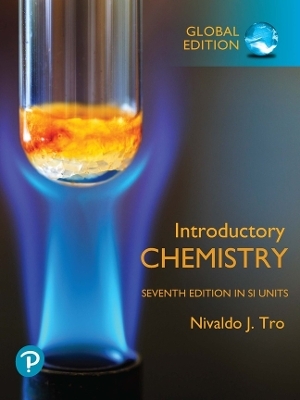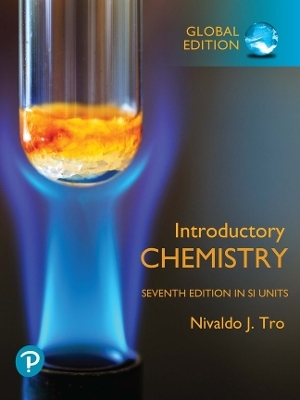
Mass Spectrometry in Medicinal Chemistry – Applications in Drug Discovery
Wiley-VCH Verlag GmbH (Hersteller)
978-3-527-61090-7 (ISBN)
- Keine Verlagsinformationen verfügbar
- Artikel merken
This first overview of mass spectrometry based pharmaceutical analysis is the key to improved high throughput drug screening, rational drug design and analysis of multiple ligand target interactions. The ready reference opens with a general introduction to the use of mass spectrometry in pharmaceutical screening, followed by a detailed description of recently developed analytical systems for use in the pharmaceutical laboratory. Applications range from simple binding assays to complex screens of biological activity and systems containing multiple targets or ligands all highly relevant techniques in the early stages in drug discovery, from target characterization to hit and lead finding.
Klaus T. Wanner studied Chemistry and Pharmacy in Munich and obtained a PhD in Pharmaceutical Chemistry in 1983. He was a postdoctoral fellow in the research group of A. I. Meyers at Colorado State University before taking up a faculty position at the Free University of Berlin. Since 1994, He is a full professor for Pharmaceutical Chemistry at the University of Munich. His main interest is in ligand and inhibitor design for GABA receptors and transporters, as well as in stereochemical aspects of structure-activity relationships. Georg C. Hofner studied Pharmacy at the University of Munich and obtained a PhD in Pharmaceutical Chemistry in 1989. He is a specialist on screening technology and is currently supervising the biological assay unit of the Centre of Drug Research at the University of Munich.
Preface.A Personal Foreword.List of Contributors.I Introduction to MS in bioanalysis.1 Mass Spectrometry in Bioanalysis - Methods, Principles and Instrumentation (Gerard Hopfgartner).1.1 Introduction.1.2 Fundamentals.1.3 Ionization Techniques.1.4 Mass Analyzers.1.5 Ion Detectors.1.6 Practical Aspects and Applications in Bioanalysis.1.7 Perspectives.1.8 Common Definitions and Abbreviations.References.II Studying target-ligand interactions analyzing the ligand by MS.2 Drug Screening Using Gel Permeation Chromatography Spin Columns Coupled with ESI-MS (Marshall M. Siegel).2.1 Introduction.2.2 Experimental.2.3 Results.2.4 Conclusions.References.3 ALIS: An Affinity Selection-Mass Spectrometry System for the Discovery and Characterization of Protein-Ligand Interactions (Allen Annis, Cheng-Chi Chuang, and Naim Nazef).3.1 Introduction.3.2 ALIS: An Affinity Selection-Mass Spectrometry System based on Continuous SEC.3.3 Discovery of Ligands from Combinatorial Libraries.3.4 Quantitative Binding Affinity Measurement.3.5 Competition-based Binding Site Determination and Affinity Ranking in Mixtures.3.6 Protein-Ligand Dissociation Rate Measurement.3.7 Conclusions.3.8 Future Directions.References.4 Library Screening Using Ultrafiltration and Mass Spectrometry (Timothy E. Cloutier and Kenneth M. Comess).4.1 Introduction.4.2 Ultra-high Throughput Filtration-based Affinity Screening as a Discovery Tool.4.3 Additional Affinity Screening Methodology That Includes Mass Spectrometry-based Readout.4.4 Conclusions and Future Directions.References.5 Continuous-flow Systems for Ligand Binding and Enzyme Inhibition Assays Based on Mass Spectrometry (Hubertus Irth).5.1 Introduction.5.2 Continuous-flow Enzyme Assays Based on Mass Spectrometry.5.3 Continuous-flow Ligand Binding Assays Based on Mass Spectrometry.5.4 MS Assay Based on Dissociation of Isolated Protein-Ligand Complexes.5.5 Future Prospects.References.6 Frontal Affinity Chromatography - Mass Spectrometry for Ligand Discovery and Characterization (Nora Chan, Darren Lewis, Michele Kelly, Ella S.M. Ng, and David C. Schriemer).6.1 Introduction.6.2 Enabling FAC with MS Detection.6.3 System Advancements - Fluidics, Immobilization, Detection.6.4 Select Applications.6.5 Summary and Evaluation.References.7 MS Binding Assays - An Alternative to Radioligand Binding (Georg Ho fner, Christine Zepperitz, and Klaus T. Wanner).7.1 Introduction.7.2 Radioligand Binding Assays.7.3 MS Binding Assays.7.4 Summary and Perspectives.References.8 Laser Desorption Assays - MALDI-MS, DIOS-MS, and SAMDI-MS (Martin Vogel, Andy Scheffer, Andre- Liesener, and Uwe Karst).8.1 MALDI-MS Assays.8.2 DIOS: Desorption/Ionization on Silicon.8.3 SAMDI: Self-assembled Monolayers for MALDI-MS.8.4 Conclusion.References.III Studying target-ligand interactions analyzing intact target-ligand complexes by MS.9 Tethering: Fragment-based Drug Discovery by Mass Spectrometry (Mark T. Cancilla and Daniel A. Erlanson).9.1 Introduction.9.2 Reduction to Practice.9.3 Finding Fragments: Thymidylate Synthase Proof of Principle.9.4 Finding and Linking Fragments in One Step: Tethering with Extenders.9.5 Conclusions.References.10 Interrogation of Noncovalent Complexes by ESI-MS: A Powerful Platform for High Throughput Drug Discovery (Steven A. Hofstadler and Kristin A. Sannes-Lowery).10.1 Analysis of Noncovalent Complexes by ESI-MS.10.2 Multitarget Affinity/Specificity Screening.10.3 Multitarget Affinity/Specificity Screening in a High Throughput Format.10.4 Affinity/Specificity.10.5 SAR by MS.10.6 Future Directions.References.IV Studying target-ligand interactions analyzing the target binding site by MS.11 Quantification of Protein-Ligand Interactions in Solution by Hydrogen/Deuterium Exchange (PLIMSTEX) (Mei M. Zhu, David Hambly, and Michael L. Gross).11.1 Introduction.11.2 The PLIMSTEX Method.11.3 Applications of PLIMSTEX.11.4 Features of PLIMSTEX.11.5 Fast Radical Footprinting for Protein-Ligand Interaction Analysis.11.6 Potential Applications in Drug Discovery.References.12 Protein-targeting Drug Discovery Guided by Hydrogen/Deuterium Exchange Mass Spectrometry (DXMS) (Yoshitomo Hamuro, Stephen J. Coales, and Virgil L. Woods Jr).12.1 Introduction.12.2 Theory of H/D Exchange.12.3 Overview of H/D Exchange Technologies.12.4 DXMS-guided Design of Well Crystallizing Proteins.12.5 Rapid Characterization of Protein Conformational Change with DXMS.12.6 Application of H/D Exchange to Protein-Small Molecule Ligand Interactions.12.7 DXMS-guided Design of Small Molecules that Target Protein-Protein Interaction Surfaces.12.8 Optimal Formulation and Quality Control of Whole-protein Therapeutics with DXMS.12.9 Conclusions.References.V MS in early pharmacokinetics.13 Mass Spectrometry in Early Pharmacokinetic Investigations (Walter A. Korfmacher).13.1 Introduction.13.2 HPLC-MS/MS Overview.13.3 In Vitro Applications.13.4 In Vivo Applications.13.5 Rapid Method Development.13.6 Increasing Throughput in HPLC-MS/MS.13.7 Matrix Effects.13.8 Discovery PK Assay Rules.13.9 New Technology in LC-MS.13.10 Conclusion.References.Index.
| Verlagsort | Weinheim |
|---|---|
| Sprache | englisch |
| Maße | 170 x 240 mm |
| Gewicht | 1032 g |
| Themenwelt | Naturwissenschaften ► Chemie |
| ISBN-10 | 3-527-61090-1 / 3527610901 |
| ISBN-13 | 978-3-527-61090-7 / 9783527610907 |
| Zustand | Neuware |
| Haben Sie eine Frage zum Produkt? |
aus dem Bereich


